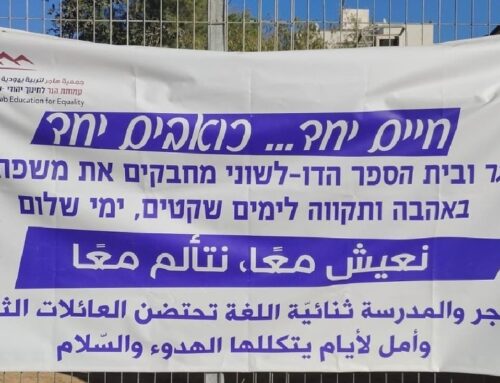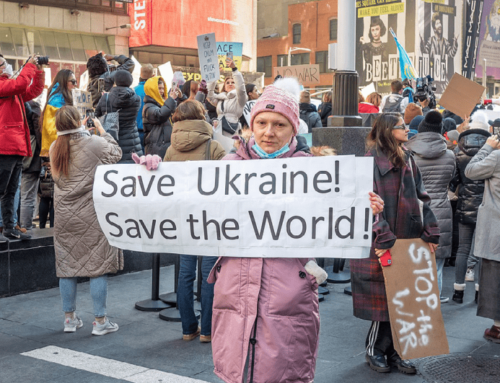A counter-factual history
As we commemorate the Six Day War of June 1967 and recall the immediate years that ensued, we have to count our lucky stars for how things have worked out for Israel and its Arab neighbors. Initially, Israel’s remarkable military victory did not result in a stampede toward the negotiating table. The three no’s of the Khartoum Summit of September ‘67 – no to negotiations, no to recognition, no to peace – threatened to entrap Israel in a long-term occupation of lands captured from Egypt, Jordan and Syria, despite the invitation of Levi Eshkol’s government to discuss a return of most of these territories.
Furthermore, Israel formally annexed East Jerusalem within weeks of its conquest and a number of settlements were established in the West Bank and the Golan Heights for what Israel viewed as security reasons. Militantly nationalist and (mostly) religious settlers established themselves in the face of official but weak government opposition in the old Jewish section of Hebron and some other places in the West Bank. Gush Emunim (Bloc of the Faithful) a fervently nationalist movement sprang up from within the previously moderate ally of the ruling Labor Alignment, the Mafdal or National Religious Party, to inhabit these places and to mobilize broad public support, but events soon intervened from unexpected quarters to stop it in its tracks.
In September 1970, the Palestine Liberation Organization, under the leadership of Yasir Arafat, attempted but spectacularly failed to overthrow King Hussein of Jordan. Syria invaded Jordan but turned tail when unequivocally threatened by Israel; covered by the assurance of Israeli intervention as necessary against the Syrians, Hussein withdrew his tank units from the north to defeat the PLO in the south.
Jordan’s King Hussein now owed his throne to Israel’s willingness to intervene on his behalf; the diminutive monarch reciprocated by forging a secret alliance. One night in 1971, Moshe Dayan was the King’s personal tour guide in Tel Aviv. The King, a veteran pilot, flew into Israel on a number of occasions — perhaps most significantly in October 1973, just before Yom Kippur, to warn of suspicious Syrian troop movements along the Golan Heights.
In the meantime, King Hussein made his conditions known for a peace treaty. He was offering some minor border modifications in Israel’s favor, including what was known as the Latrun salient – a strategic extrusion of Jordan’s West Bank that had blocked the Jerusalem-Tel Aviv road – and the Jewish Quarter of East Jerusalem with access to the Western (“Wailing”) Wall, Judaism’s holiest site. In exchange, he demanded an Israeli withdrawal from most of the rest of East Jerusalem and the West Bank.
This was a hard sell for the government of Golda Meir. Prime Minister Meir was particularly reluctant to part with any section of East Jerusalem, all of which had been officially incorporated into Israel’s “eternal” and “united” capital. She was also influenced by such Labor party leaders and former generals as Moshe Dayan and Yigal Alon who had a variety of ideas on how to deal with the West Bank, none of which involved a wholesale return of the territory to Jordan.
Also during the early 1970s, Anwar Sadat, Gamel Abdel Nasser’s successor as president of Egypt, was making some intriguing public statements about the possibility of peace with Israel in exchange for Israel’s withdrawal from the Sinai. Gideon Rafael, Israel’s ambassador to the United Nations at the time, proclaimed Sadat’s very public words to be “unprecedented” from any Arab leader. Both foreign minister Abba Eban and Yitzhak Rabin, Israel’s rising political star (who would eventually succeed Golda Meir as prime minister) advised Meir to take Sadat seriously.
Balanced against these dovish influences were, again, Moshe Dayan and Yigal Alon. Dayan stated boldly: “Better Sharm el-Sheikh without peace than peace without Sharm el-Sheikh.” (Sharm el-Sheikh is the strategic tip of the Sinai Peninsula from where Egyptian guns had blockaded the port of Eilat in 1967, precipitating the war.)
But with peace now looming as possible along Israel’s two most important borders, Meir was narrowly persuaded to give peace a chance. Ironically, it was a left-wing alternative that decisively pushed Israel’s leader to embrace concurrent and interlocking treaties with Egypt and Jordan as the “centrist” option. In 1972, Victor Shemtov, the leader of Mapam – Labor’s left-wing partner in the ruling parliamentary bloc known as the Labor Alignment – had teamed up with Aaron Yariv — a Labor party minister, reserve IDF general and former commander of military intelligence. Their joint statement that Israel should deal with any Palestinians who “recognize Israel’s right to exist and abandon the use of terror” –– was known as the “Shemtov-Yariv formula.” It was understood as attempting to push Arafat’s PLO faction into a peace process.
The mainstream of the Labor party was rhetorically enamored with the “Jordanian option” — the notion that the Palestinian issue be resolved within the context of the Kingdom of Jordan and not an independent Palestinian state. Shemtov-Yariv helped make the actual Jordanian option as presented by King Hussein an attractive alternative.
The window of opportunity for this direction was only open for a limited time, however. President Sadat said then and indicated afterward that if he could not peacefully negotiate a complete return of the Sinai to Egypt, he would have opted for war to achieve the same objective. Likewise, we now know that forces within the Arab League were in motion to take the Palestinian “franchise” away from Jordan and hand it to Arafat’s PLO as the “sole legitimate representative of the Palestinian people.” Happily, the concurrent Israeli peace treaties with Jordan and Egypt were enacted before these could happen.
The Egyptian and Jordanian treaties fit with each other like a hand and glove. Recall that Egypt had never incorporated the Gaza Strip as sovereign Egyptian territory and made a point of refusing to accept its return. But Gaza’s transfer to Jordan facilitated the entire three-way peace process. This new territory brought the vast majority of people who came to regard themselves as Palestinian Arabs, including most of the refugees of 1948, into a single sovereign entity where they constituted a majority of citizens. Jordan – originally the eastern two-thirds of the League of Nations Mandate that the British detached to create the Hashemite Kingdom of Transjordan – was also the only Arab country that had allowed Palestinians equal rights as citizens in the first place.
And with the Gaza Strip, came a Mediterranean seaport, rail and road links through Israel and a flourishing economy. Gaza refugee camps were largely emptied with Palestinians freely settling to establish new productive lives in the West Bank and in the rest of Jordan. Conditions of overcrowding and poverty in the tiny Gaza Strip were alleviated to the point that a modest level of prosperity has taken hold with Gaza’s lovely Mediterranean beaches and hot, dry climate now sustaining a healthy tourist industry, as well as successful greenhouse agriculture.
As we know too well, nothing on earth is totally idyllic. Tensions do rise up from time to time. Jordan and Egypt still struggle with issues of modernity and democracy. And some Palestinian nationalists have found it difficult to adjust to a surrender of what they consider inalienable rights to their ancestral homes in Israel and to accept a state that is called Jordan and not Palestine. But the late King Hussein’s decision to provide West Bank and Gaza Strip Palestinians with a parliament of their own in a more federal structure has been of some help in this regard. All in all, we can look back on the 40 years since the war of 1967 with considerable relief that Israelis, Palestinians, Jordanians, Egyptians and most Arabs now live as neighbors in considerable harmony.
Note to Above
This flight of fancy is about 90 percent accurate in terms of historical fact. What did not happen were the decisions of Israel’s Labor government under Golda Meir to respond to Anwar Sadat’s peace feelers prior to the Yom Kippur War of 1973 and to take full advantage of the genuine (albeit secret) alliance with Jordan’s King Hussein in the early 1970s. What might have happened in the wake of peace treaties with Egypt and Jordan in the early ‘70s is, of course, pure speculation.






Leave A Comment